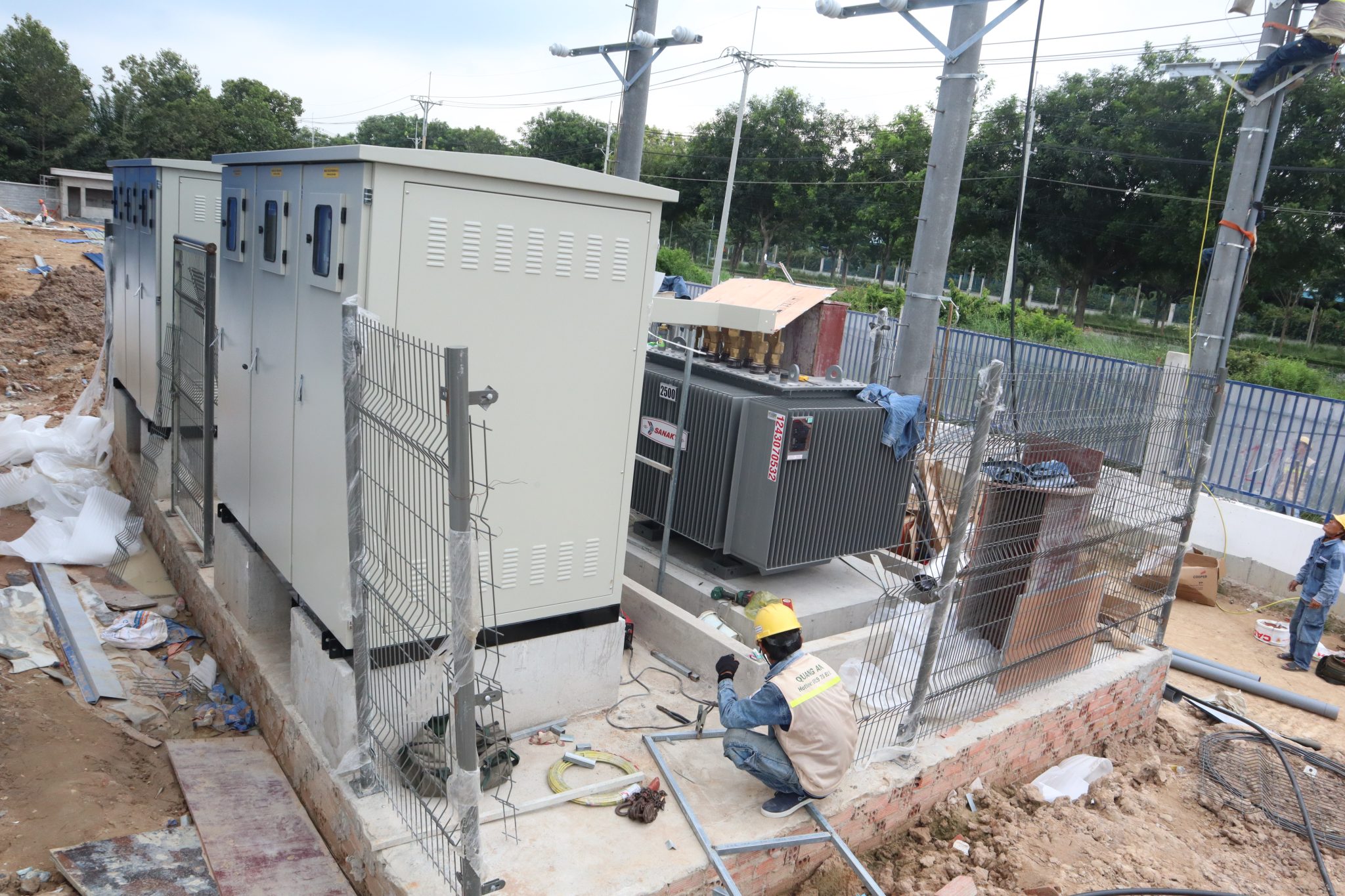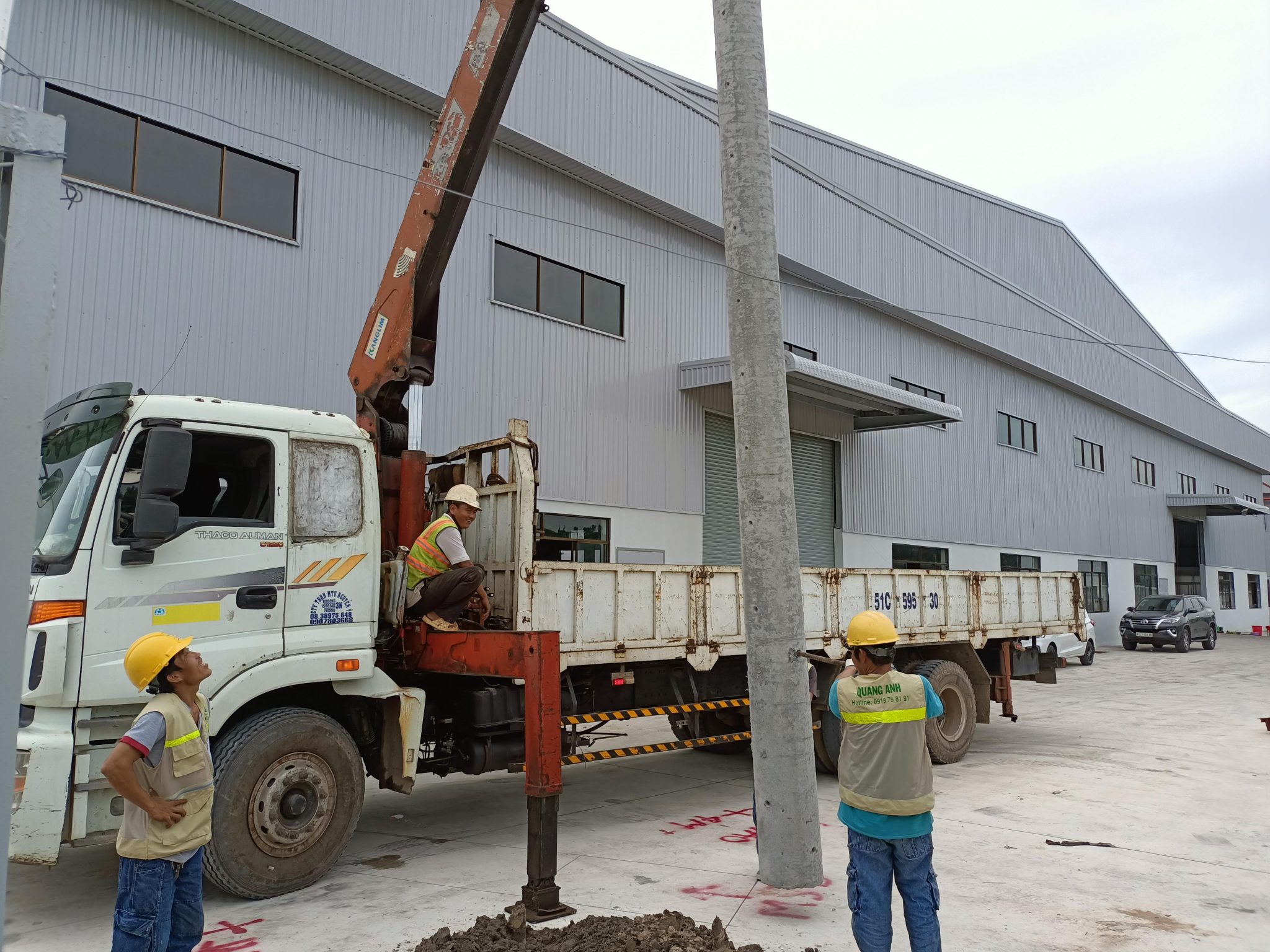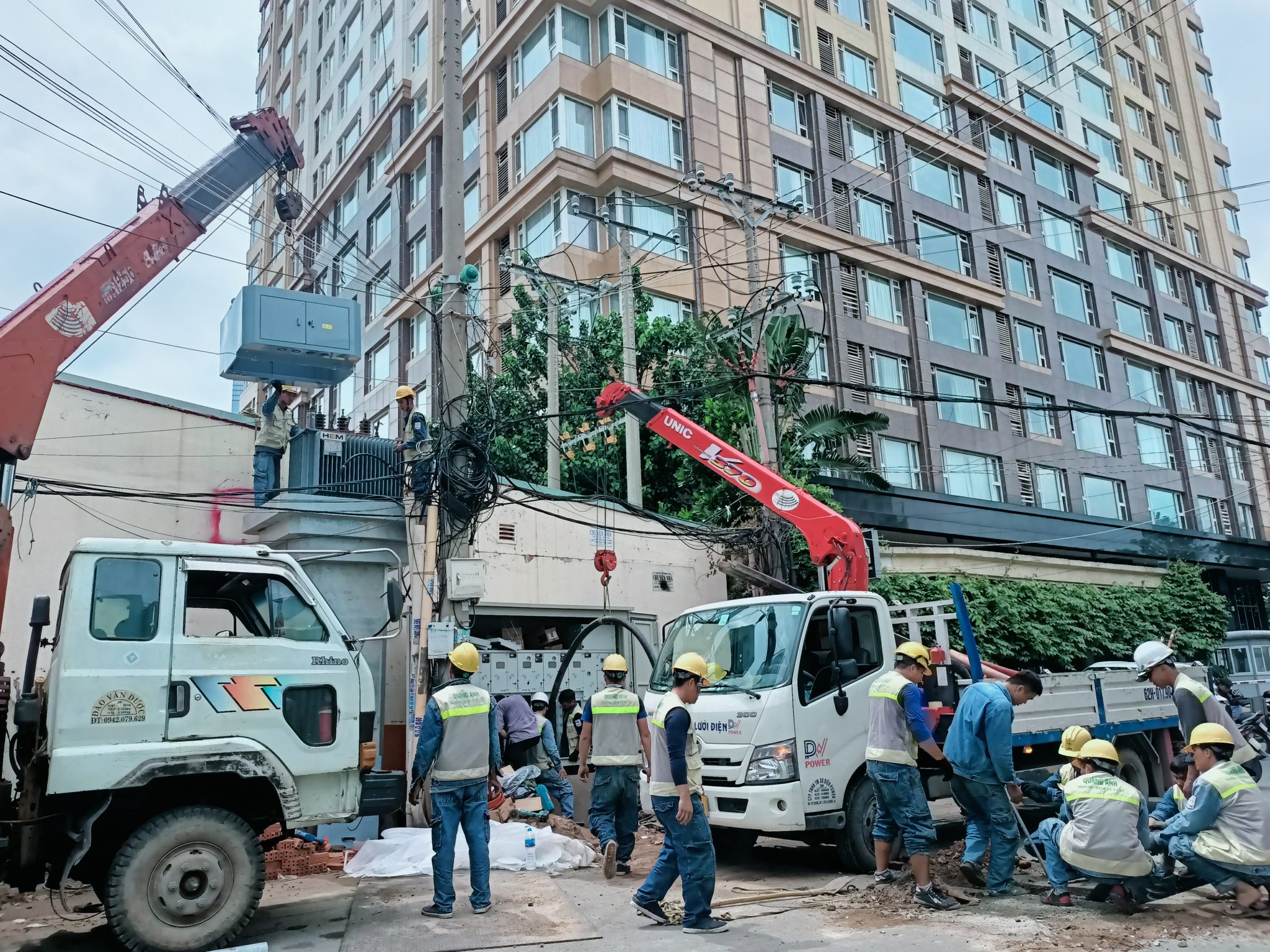Implementing factory electrical systems is crucial as it directly influences the operational efficiency and safety of production facilities. These systems involve the design, installation, operation, and maintenance of various electrical networks within a factory setting.
Main Power Cable Systems
The foundational step in factory electrical work involves managing the main power cable systems, crucial for supplying power to all equipment. Cables must be scientifically selected to match overall capacity and device-specific requirements, ensuring safe and effective operations. They can be installed on overhead supports or enclosed in underground conduits, requiring precise connections and protection against moisture, especially when encased in PVC.
Implementing Main Power Cable Systems is vital to maintaining factory-wide electrical supply and achieving optimal performance. This involves executing a series of careful and meticulous steps.
Standard procedure includes:
- Site Survey and Design: Initially, conduct a site survey to identify specific requirements and optimal installation locations, then design detailed 2D or 3D cable system layouts.
- Cable Cross-section Selection: Calculate load capacity to choose appropriate cable cross-sections, ensuring cables can handle necessary loads and optimize electrical safety and performance.
- Installation Execution: This step involves installing PVC underground or exposed cables from the transformer to the main electrical panel, ensuring secure and safe placement.
- System Connection: Crucial for system completion, linking cables with the main circuit breaker (MCCB) and the main switchboard (MSB), ensuring standardized and safe electrical connectivity.
Cables can be set up underground (with PCV or metal protection against harsh environmental conditions) or exposed (on poles, supports, suitable for open spaces).
To maintain the cable systems’ stability and safety, regular checks and maintenance are essential, enabling early detection of potential issues and optimizing installation performance.
Implementing main power cable systems ensures secure power supply to the factory, optimizing efficiency and minimizing operational risks.

Cable Trays Installation
An essential component of factory electrical work is the installation of cable trays. These facilitate cable routing and protection, ensuring electrical safety and simplifying maintenance. Quality is maintained by utilizing specialized machinery for cutting, and supports must be securely aligned and fixed. Standard height should be below 1.5m for ease of access during maintenance.
Cable tray installation plays a crucial role in cable management and meeting necessary safety standards in electrical projects.
-
Step 1: Preparation and Inspection
- Prepare and ensure all necessary tools and support equipment for the installation process.
- Inspect designs and drawings to ascertain precise positioning and technical specifications of the cable tray system.
- Check machinery readiness and operational stability.
-
Step 2: Cutting and Processing Cable Trays
- Measure and cut cable trays to appropriate lengths, adding 5cm to each piece for adjustment ease.
- Use machinery to smooth edges, ensuring worker safety.
-
Step 3: Cable Tray Route Determination
- Determine installation routes for effective cable management.
- Mark support attachment points precisely, using a marker or specialized equipment.
-
Step 4: Support Attachment
- Drill holes and secure supports to walls or floors firmly.
- Install frame transition joints, ensuring hooks face downward for safety and stability during installation.
-
Step 5: Mounting Cable Trays on Supports
- Begin with end pieces, corners, and branches, then continue with straight sections.
- Ensure trays are securely positioned on transition frame joints.
-
Step 6: Grounding
- Secure grounding wires to the cable trays and inspect ground connections for safety.
- Ensure safety standards are maintained in the cable tray installation system.
-
Step 7: Testing and Evaluation
- Inspect the entire installation process to confirm compliance with technical standards.
- Test the system, ensuring safe and effective operation before commission.
Ensure that all cable segments are securely affixed to the cable trays using plastic ties at optimal intervals of 3m to 1.5m, maintaining system quality and efficiency.

Lighting and Light Electrical Systems
Factory lighting systems must ensure adequate lighting, safety, and energy savings with industrial lights, corridor lights, and emergency lighting. Simultaneously, light electrical systems such as fire alarms, security cameras, and internal networks should be seamlessly integrated to guarantee continuous and efficient operation. These systems are crucial for maintaining security and stability in factory operations.
In the context of project development in Vietnam, industrial lighting and light electrical systems (ELV) have become indispensable elements.
Light Electrical Systems (ELV – Extra Low Voltage System)
Light electrical systems play a significant role in project electrical systems but don’t operate like main electricity. These systems include industrial LAN, security cameras, cable television, and video conferencing, with voltage typically ranging from 35V AC to 60V DC, minimizing factory safety risks. Despite a lower project proportion, these systems significantly enhance project quality and prestige.
Lighting Systems
Lighting systems, part of the ELV, provide essential illumination for industrial spaces. Key components include fluorescent, LED, halogen, and incandescent lights. In production facilities, integrating industrial lighting is necessary to ensure effectiveness and workplace safety.
Comparing Light Electrical and Lighting Systems
| System | Description | Voltage |
|——————————-|———————————————————————-|—————|
| Light Electrical Systems | Includes industrial LAN, cameras, cable TV… | 35V AC – 60V DC |
| Lighting Systems | Part of ELV, providing lighting for spaces. | Typically 220V |
Both systems play indispensable roles in enhancing quality and ensuring smooth operation within construction projects. ELV systems support modern technology, while lighting systems provide essential illumination for daily production activities.

Installing factory electrical systems demands precision and high-level expertise to ensure safety and efficiency. Investing in quality systems not only boosts productivity but also provides long-term asset protection for industrial facilities.
For a factory electrical system installation that meets standards, contact QuangAnhcons at hotline: +84 9 1975 8191 today.
QuangAnhcons offers professional factory electrical system services, ensuring the highest performance and safety from design to installation and comprehensive maintenance.


Related Posts
Factory Electrical Systems: Comprehensive Design and Implementation Guide
Discover the detailed and safe process of factory electrical systems design and implementation. [...]
Oct
Blueprints Required for Factory Construction Permits
Discover the necessary blueprints in factory construction permit applications, from floor plans to electrical and [...]
Oct
What Are the Requirements for a Factory Construction Permit? A Comprehensive Guide
Explore the documentation and steps needed to secure a factory construction permit for streamlined project [...]
Oct
Factory Construction Permit Procedures in Vietnam: Essential Guidelines and Documents
Learn the procedures for securing a factory construction permit in Vietnam, focusing on document preparation [...]
Oct
Key Steps in the Factory Construction Process
Discover the essential steps and requirements for building factories. [...]
Oct
Comprehensive Electrical Substation Solutions by Quanganhcons
Discover the cutting-edge electrical substation solutions offered by Quanganhcons for industrial applications. [...]
Oct
Investment Costs for a 1MWp Solar Power System and Influencing Factors
Explore the investment costs for a 1MWp solar power system in Vietnam and the influencing [...]
Sep
QuangAnhcons: Elevating Wind Energy Solutions
Explore QuangAnhcons' leadership in wind energy and renewable solutions in Vietnam. [...]
Sep
Electrical Contractor Strategies at Becamex Industrial Park
Discover the strategic advancements and partnerships of the electrical contractor at Becamex Industrial Park. [...]
Sep
Investment Insights for 1MW Wind Energy in Vietnam: Costs and Opportunities
Discover the detailed analysis of costs and opportunities for investing in 1MW wind energy projects [...]
Sep
Advanced Electrical Installation Solutions by QuangAnhcons
Explore advanced electrical installation solutions and modern technology with QuangAnhcons. [...]
Sep
Enhancing Industrial Electrical Services with Quanganhcons
Discover Quanganhcons' expertise in industrial electrical services, offering efficient and sustainable power systems. [...]
Sep
Comprehensive MEP Solutions by QuangAnhcons: From Design to Maintenance Excellence
Discover optimal MEP solutions with QuangAnhcons, dedicated to excellence from design through maintenance. [...]
Sep
Comprehensive Electromechanical Contracting Solutions by QuangAnhcons
Explore QuangAnhcons' comprehensive services for efficient and safe energy system solutions. [...]
Sep
QuangAnhcons: Empowering Industrial Energy Solutions
Discover how QuangAnhcons delivers optimal industrial EPC solutions. [...]
Sep
Effective Industrial Construction Management and Execution
Optimize your industrial projects from design to execution with our contractor services. [...]
Sep
QuangAnhcons: Pioneers in M&E and Renewable Energy Solutions
Discover QuangAnhcons' innovative M&E services and renewable energy solutions. [...]
Sep
QuangAnhcons: Expertise and Outstanding Services in the Electrical Sector
Discover the unmatched expertise and services of QuangAnhcons, setting superior standards in the electrical contracting [...]
Sep
QuangAnhcons: Innovation and Precision in Industrial Electrical Contracting
Discover QuangAnhcons, a top contractor offering superior electro-mechanical solutions. [...]
Aug
Expert Solutions for 2x2500kVA Substation Projects with QuangAnhCons
Explore QuangAnhCons, a forefront entity in designing and constructing large industrial substations. [...]
Aug